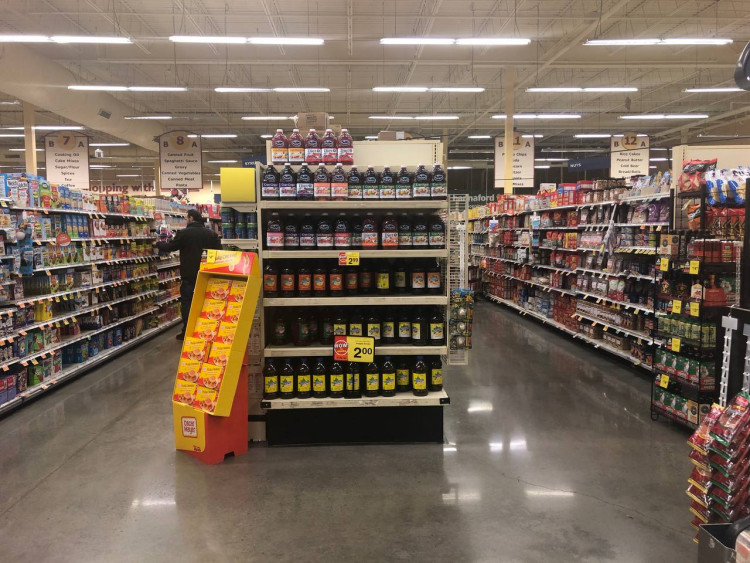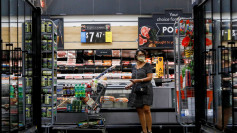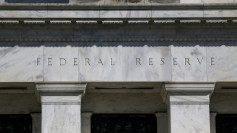Consumer spending in the United States showed unexpected resilience in July, with retail sales rising by 1%, a figure that significantly exceeded Wall Street's expectations. The Commerce Department's report, released on Thursday, indicated a robust economic performance, bolstered by strong consumer activity despite ongoing inflationary pressures. This growth is a clear indicator that the American consumer, often viewed as the backbone of the economy, continues to drive economic momentum even in the face of broader concerns.
Economists surveyed by Dow Jones had anticipated a more modest 0.3% increase in retail sales for July, making the actual 1% rise a positive surprise. This comes after a revised decline of 0.2% in June, further emphasizing July's rebound. When excluding auto-related items, sales still showed a healthy increase of 0.4%, outpacing the 0.1% forecast.
A closer look at the data reveals that gains were led by several key categories. Motor vehicle and parts dealers saw sales surge by 3.6%, while electronics and appliance stores experienced a 1.6% rise. Food and beverage outlets also reported a 0.9% increase in sales. On the other hand, some sectors saw declines, with miscellaneous retailers dropping by 2.5% and clothing stores recording a slight 0.1% decrease.
The positive retail sales figures were accompanied by encouraging news from the labor market. Initial claims for unemployment benefits fell to 227,000 for the week ending August 10, down by 7,000 from the previous week and below the expected 235,000. This decline in jobless claims signals a continued strength in the labor market, further supporting the narrative of a resilient U.S. economy.
Market reactions to the data were swift, with stock market futures climbing and Treasury yields spiking. Richard de Chazal, a macro analyst at William Blair, commented on the report, stating, "This was further evidence that the U.S. consumer still has the ability to surprise to the upside. This was another solid report, and inconsistent with a consumer who is on the brink of collapse."
The retail sales report arrives in the same week as other economic data showing that inflation pressures have eased slightly. Consumer prices rose by just 0.2% in July, bringing the annual inflation rate down to 2.9%, the lowest since March 2021. Wholesale prices also saw a modest increase of 0.1% on the month, with a 2.2% year-over-year rise. While inflation remains above the Federal Reserve's 2% target, the data suggests a continued easing of price pressures that had peaked two years ago.
However, not all economic indicators were uniformly positive. The Labor Department reported a slight increase in import prices by 0.1% in July, which exceeded the forecast of no change. On an annual basis, import prices rose by 1.6%, marking the highest increase since December 2022.
As financial markets speculate on the Federal Reserve's next move, the strong consumer spending data adds complexity to the central bank's decision-making process. With inflation showing signs of cooling, there has been growing expectation that the Fed may implement its first interest rate cut in over four years during its September meeting. However, the robust consumer activity might prompt the Fed to adopt a more cautious approach to rate cuts.
Walmart, the nation's largest retailer, also contributed to the positive economic outlook with its latest earnings report. The company exceeded expectations for both sales and profits in the previous quarter and subsequently raised its full-year guidance. However, Walmart CFO John Rainey noted some caution, particularly regarding the second half of 2024, but emphasized that consumer health remained stable, with no signs of further weakening.
While the retail sector and labor market appear to be on solid footing, there are areas of the economy that continue to face challenges. Manufacturing, for example, showed mixed results. The New York Federal Reserve's Empire State Manufacturing Index improved slightly but remained in negative territory at -4.7, while the Philadelphia Fed's manufacturing index dropped to -7, its first negative reading since January, well below the expected 7.9.
As the U.S. economy navigates through the remainder of 2024, the focus is increasingly shifting from inflation concerns to broader economic indicators, including consumer spending and labor market dynamics. Nicholas Brooks, head of economics and investment research at ICG, emphasized the importance of these metrics, stating, "What's happening with retail sales and other indicators of consumer sentiment, I think are going to be increasingly important indicators for markets."






